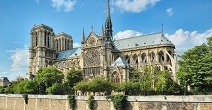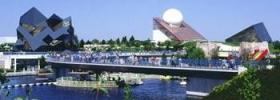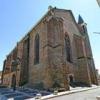 Home
Home- > Tours
- > Midi-Pyrénées
- > Tarn-et-Garonne
- > Valence d'agen
- > Valence-d'agen
Valence-d'agen
| Topic | Sites and museums |
| Departure | VALENCE D'AGEN (82) |
| Details | Commune located on the Barguelonne river and Right Bank of the Garonne; as on the transportation routes which are the Channel of the Garonne, the Bordeaux-Toulouse line and the trunk road 113 (D813 since 2008) between Agen and Castelsarrasin |
Discover Valence-d'Agen
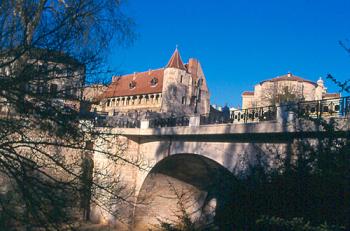
Traditional ground of reception, Valence d'Agen adds its charm to hospitality.
Flowery city, this village of 5000 inhabitants located at the foot of the slopes of Gascogne, in Tarn-et-Garonne in the Area of the Midday-Pyrenees, allures you by his framework of life.
The softness of its climate, the discovery of surrounding nature, the richness of its past fascinate the visitor obliging it to prolong his stay to taste all the attractions of a pastoral relaxation. In addition to the interest which the presence of the Channel of the Two Seas represents, Valence of Agen offers the smoothness of an English country house created in 1283 per Edouard Ier of England. It is a city where it makes good things in life and to stroll near its flowered laundrettes, of its pigeon, its very famous weekly market. It is a dynamic city characterized by an associative fabric and dense sportsman, accomodating several hundreds of thousands of spectators come to attend the largest spectacle of sound, gestures and lights of the Area: " with the current….a histoire" putting in scene the past of Valence around the Channel of the Two Seas.
Accommodation nearby
Visit Valence-d'Agen city
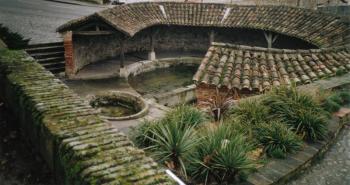
* The laundrette Saint-Bernard
• In 1807, one decided to fill the ponds of Placed (current Place Jean-Baptizes Chaumeil) which were too muddy. In compensation, one built the laundrette Saint-Bernard which made it possible to water the cattle and the horses of the imperial gendarmes. The semicircular roof was added at the request of them lavender fields in order to preserve them “coldness of the winter and bad weather”.
* The Laundrette Del Théron
• It is oldest of the three laundrettes of the city. Since 1661, the fountain was the subject of repairs on behalf of the consuls and a engraved stone their names and armorial bearings of the lord maquis of Valence was set up above the fountain (stone now disappeared). In 1880, the bad condition of the laundrette required repairs, the Municipal council of the time decided in particular that it was to be tiled rather than cemented because of the frost. In 1906, the roof was remade. Finally the last restoration goes back to July 2003.
* The Laundrette of the EP of Gleyze
• This square place, surrounded originally of houses with ambans was the heart of the country house. In its center was built the house common surrounded itself of ambans under which the merchants spread out their goods the market days.
• The current Market completion date of the 19th century. The oldest house of the place (17th) masonry with half-timberings was built in skew to facilitate the passage of the road of Bordeaux-Toulouse which crossed the centre town then. For these same reasons the arcades southern part of the place were removed.
* The Place of the Dovecote
• This place, of about thirty years, accomodates pigeon on pillars. It was transported of Clermont-Soubiran on its current site after restoration.
* The alley of the Fountains
• It is on the site of the old ditches of the city that one establishes the beautiful walk of the fountains. To reach it more conveniently, they bored a fourth door of city near the central place, at the end of the street which, since then, with always borne the name of Carry-New. The alleys were used thereafter to lodge the market with the poultry and are currently a place of shaded walk.
* Notre-Dame church
• The primitive church was built shortly after the creation of the country house (1283) and had a defensive role by its position. The current church goes back to 1902. It is of style néo-rebirth. Its interior is Gothic radiant. The organ built in 1865 per Vincent Cavaillé coll was in the beginning an organ of living room. The furniture of the church is recent, but one can nevertheless discover above the high altar a virgin with the child out of wooden gilded of the beginning 17th, a statue of Saint-Bernard also out of wooden gilded of 17th and a table of 1726 coming from the convent of the Capuchins and representing the appearance of the Virgin with Saint-Anthony de Padoue.
* The public garden
• Located in the enclosure of the old convent of the Capuchins, it is the reflection of the concern of fleurissement of the city (regional classification: 3 flowers).
Accommodation nearby
Sports and leisures in Valence-d'Agen
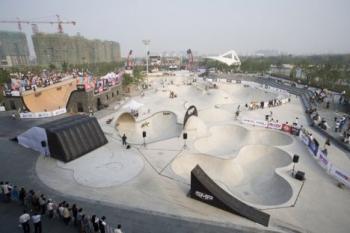
Traditional ground of reception because of a legendary user-friendliness, Valence d'Agen can also join the useful one for the pleasant one. In addition to its economic competence, it knew to develop a very active policy in term of social, cultural and sporting equipment.
* RIDING SCHOOL EQUILOISIRS
Route des Charretiers Pony Club, horse, covered horse-gear, two careers, Club House
Opened from 8:00 to 12:00 and from 14:00 to 19:00 (closing Monday)
* SKATE PARK
Route des Charretiers Two Slopes Free access
* CLAM (Club Leisures Ventures Motor bike) Vacation centre & leisures 390, Route des Charretiers
• Recreational centre for the 6/16 years Wednesday and Saturday afternoon and school vacations
• Vacation centre for the 8/16 years Initiation and discovered motor bike, activities various (school vacations)
* COVERED BOWLING PITCH
Rue du Château (obligatory chart adhering)
* GROUND OF GAME OF BOWLS AND LYONS
Place Jean-Baptiste Chaumeil
Accommodation nearby
Latest news on : Valence-d'Agen
Tourism near
 Visit the city of Valence d'agen
Visit the city of Valence d'agen - 1 Museum
- 3 Monuments
Tours
 Auvillar
Auvillar
 Puymirol
Puymirol























